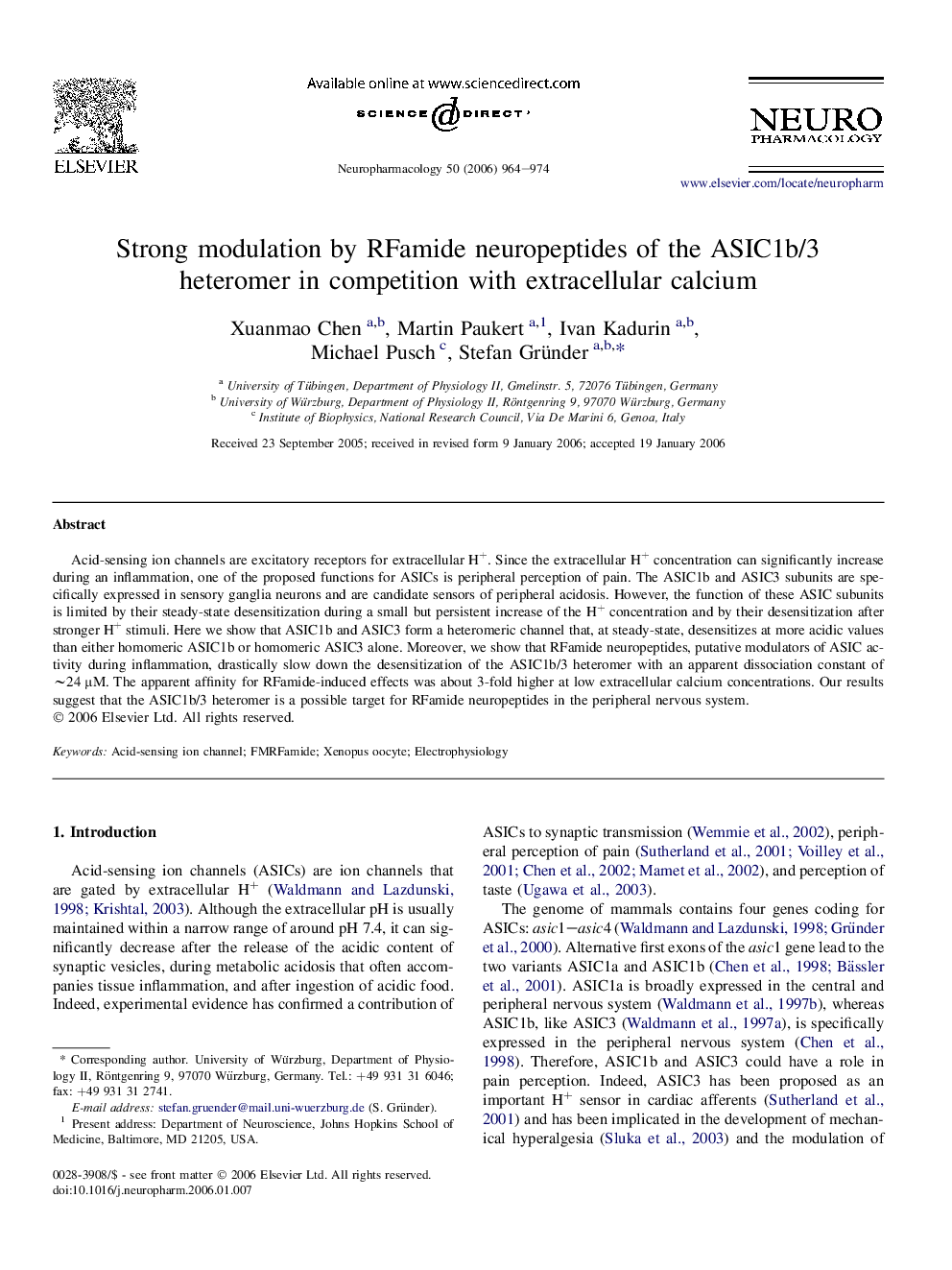| Article ID | Journal | Published Year | Pages | File Type |
|---|---|---|---|---|
| 2495202 | Neuropharmacology | 2006 | 11 Pages |
Acid-sensing ion channels are excitatory receptors for extracellular H+. Since the extracellular H+ concentration can significantly increase during an inflammation, one of the proposed functions for ASICs is peripheral perception of pain. The ASIC1b and ASIC3 subunits are specifically expressed in sensory ganglia neurons and are candidate sensors of peripheral acidosis. However, the function of these ASIC subunits is limited by their steady-state desensitization during a small but persistent increase of the H+ concentration and by their desensitization after stronger H+ stimuli. Here we show that ASIC1b and ASIC3 form a heteromeric channel that, at steady-state, desensitizes at more acidic values than either homomeric ASIC1b or homomeric ASIC3 alone. Moreover, we show that RFamide neuropeptides, putative modulators of ASIC activity during inflammation, drastically slow down the desensitization of the ASIC1b/3 heteromer with an apparent dissociation constant of ∼24 μM. The apparent affinity for RFamide-induced effects was about 3-fold higher at low extracellular calcium concentrations. Our results suggest that the ASIC1b/3 heteromer is a possible target for RFamide neuropeptides in the peripheral nervous system.
